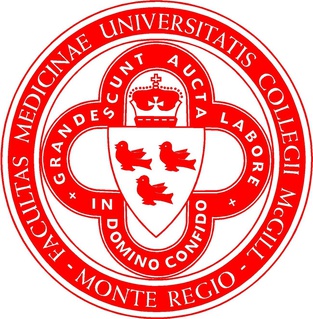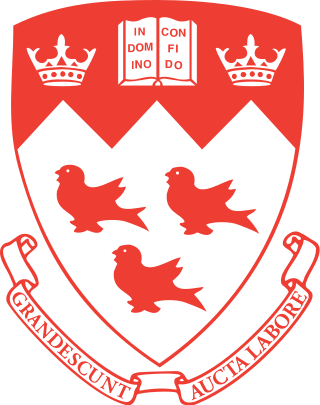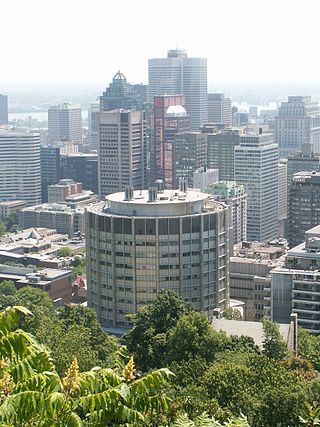An artificial organ is a human made organ device or tissue that is implanted or integrated into a human — interfacing with living tissue — to replace a natural organ, to duplicate or augment a specific function or functions so the patient may return to a normal life as soon as possible. The replaced function does not have to be related to life support, but it often is. For example, replacement bones and joints, such as those found in hip replacements, could also be considered artificial organs.

Nuclear medicine or nucleology is a medical specialty involving the application of radioactive substances in the diagnosis and treatment of disease. Nuclear imaging, in a sense, is "radiology done inside out" because it records radiation emitted from within the body rather than radiation that is transmitted through the body from external sources like X-ray generators. In addition, nuclear medicine scans differ from radiology, as the emphasis is not on imaging anatomy, but on the function. For such reason, it is called a physiological imaging modality. Single photon emission computed tomography (SPECT) and positron emission tomography (PET) scans are the two most common imaging modalities in nuclear medicine.

The Temerty Faculty of Medicine is the medical school of the University of Toronto. Founded in 1843, the faculty is based in Downtown Toronto and is one of Canada's oldest institutions of medical studies, being known for the discovery of insulin, stem cells and the site of the first single and double lung transplants in the world.
Phil Gold is a Canadian physician, scientist, professor and author.

Uniformed Services University of the Health Sciences (USU) is a health science university of the U.S. federal government. The primary mission of the school is to prepare graduates for service to the U.S. at home and abroad as uniformed health professionals, scientists and leaders; by conducting cutting-edge, military-relevant research; by leading the Military Health System in key functional and intellectual areas; and by providing operational support to units around the world.

Regenerative medicine deals with the "process of replacing, engineering or regenerating human or animal cells, tissues or organs to restore or establish normal function". This field holds the promise of engineering damaged tissues and organs by stimulating the body's own repair mechanisms to functionally heal previously irreparable tissues or organs.

The Faculty of Medicine and Health Sciences is one of the constituent faculties of McGill University. It was established in 1829 after the Montreal Medical Institution was incorporated into McGill College as the college's first faculty; it was the first medical faculty to be established in Canada. The Faculty awarded McGill's first degree, and Canada's first medical degree to William Leslie Logie in 1833.
An artificial cell, synthetic cell or minimal cell is an engineered particle that mimics one or many functions of a biological cell. Often, artificial cells are biological or polymeric membranes which enclose biologically active materials. As such, liposomes, polymersomes, nanoparticles, microcapsules and a number of other particles can qualify as artificial cells.

McGill University is an English-language public research university located in Montreal, Quebec, Canada. Founded in 1821 by royal charter, the university bears the name of James McGill, a Scottish merchant whose bequest in 1813 established the University of McGill College. In 1885, the name was officially changed to McGill University.
The Faculty of Science is one of eleven faculties at McGill University in Montréal, Québec, Canada. With roots tracing back to 1843, the Faculty currently offers several undergraduate and graduate programs ranging from Earth Sciences to Mathematics to Neuroscience. Notable alumni of the Faculty of Science include several astronauts and Nobel Prize winners.
Albert Juan Aguayo is a Canadian neurologist at McGill University. Albert Juan Aguayo is a Canadian neurologist at McGill University. Hailing from the Bahia Blanca in Argentina, Dr. Aguayo graduated in medicine from the National University of Córdoba. After graduating from Argentina, Aguayo continued to train in neurology, working as an assistant physician in Neurology University of Toronto and McGill University. In the year 1967, McGill University appointed Aguayo as assistant professor in the department of Neurology and Neurosurgery. From the years 2000 to 2005, Aguayo served as the Secretary General for the International Brain Research Organization and then proceeded to become the President of the International Brain Research Organization from the years 2006 to 2008

Mark J. Poznansky is a research scientist, science administrator and science blogger. He is the past president and CEO of the Ontario Genomics Institute (OGI) and was previously chair of the board of OGI, and the founder of G2G Consulting Inc. He is a member of the Order of Canada, a member of the Order of Ontario and was CEO, president and scientific director of Robarts Research Institute.

The McIntyre Medical Sciences Building is part of the McGill University campus in Montreal, Quebec, Canada. A concrete building built in 1965, it is known for its circular shape. The McIntyre Building is the central hub of the McGill University Faculty of Medicine. Its sixteen floors include classrooms, research facilities, laboratories, offices and a cafeteria. Its design, by Canadian architect Janet Leys Shaw Mactavish of the architecture firm Marshall and Merrett, is meant to reduce traffic and circulation between rooms.
Richard Margolese, MD, CM FRCS (C), is a Canadian scientist and has been a leader of multiple research studies that have changed the standard treatment for early-stage breast cancer. He is a native of Montreal, Canada.
Éric A. Cohen is a Canadian molecular virologist whose research is focused on human immunodeficiency virus (HIV)-host interactions that govern viral replication and persistence.
Michel Bouvier is a Canadian biochemist and molecular pharmacologist. He is a professor of biochemistry and molecular medicine at Université de Montréal; a principal investigator and the chief executive officer at the Institute for Research in Immunology and Cancer; and an associate vice-president in Research, Scientific Discovery, Creation, and Innovation at Université de Montréal. His work focuses on the study of cell signaling towards the discovery of new pharmaceutical drugs.
Rhian M. Touyz Koppel MBBCh, MSc (Med), PhD, FRCP, FRSE, FMedSci, FCAHS is a Canadian medical researcher. She is currently serving as the Executive Director and Chief Scientific Officer of the Research Institute of the McGill University Health Centre in Montreal, Canada, since 2021. A clinician scientist, her research primarily focuses on hypertension and cardiovascular disease.
Alice Benjamin is a Canadian specialist in fetal and maternal medicine.
John J. M. Bergeron, is a Canadian cell biologist and biochemist. He is an Emeritus Robert Reford Professor of Anatomy and Professor of Medicine at McGill University in Montreal, Quebec, Canada. He is a Rhodes Scholar. He is best known for the discovery of calnexin, endosomal signalling and organellar proteomics.
Elham Emami is an Iranian-Canadian clinician scientist. She is the dean of McGill University Dental Medicine and Oral Health Sciences. Born and raised in Iran, Emami moved to Canada in 2002 to pursue her PhD and MSc at the Université de Montréal.








